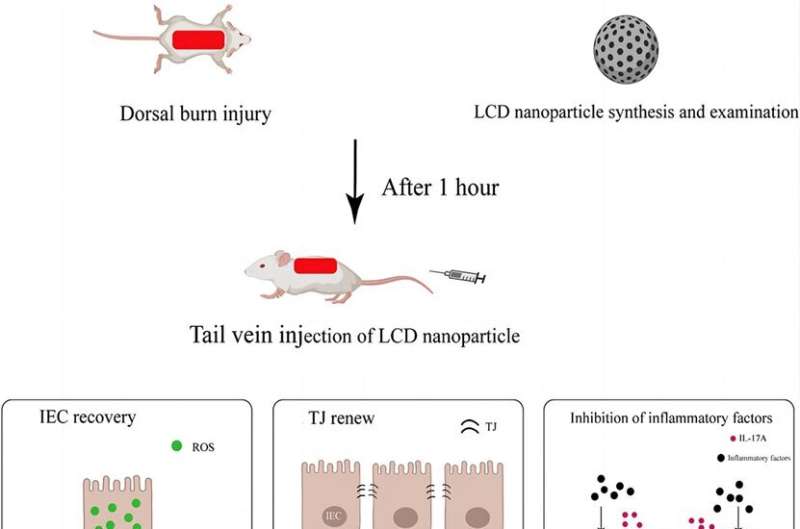This article has been reviewed according to Science X's editorial process and policies. Editors have highlighted the following attributes while ensuring the content's credibility:
fact-checked
proofread
New LCD nanoparticle therapy offers hope for burn victims

Severe burns can cause critical issues, including deep tissue damage and an increased risk of fatal conditions such as sepsis and organ failure. A major concern is the disruption of the intestinal barrier, leading to inflammation and systemic health problems. This breakdown allows pathogens to invade, worsening the patient's condition. Given the limitations and side effects of current treatments, there is a pressing need for new, more effective therapies.
In a new study featured the journal Burns & Trauma on 3 March 2024, researchers from the Army Medical University in China have unveiled an innovative nanoparticle-based therapy that markedly enhances recovery from severe burn–induced damage to the intestinal barrier.
The research introduces the use of luminol-conjugated cyclodextrin (LCD) nanoparticles. This novel therapeutic approach presents a significant advancement in treating one of the most severe complications arising from extensive burn injuries, promising improved patient outcomes through cutting-edge nanoparticle technology.
Severe burns can disrupt the intestinal barrier, leading to life-threatening complications. The innovative LCD nanoparticles tackle this issue head-on. These nanoparticles are engineered by attaching luminol to cyclodextrin, creating a complex that targets the damaged intestinal barrier directly. Once administered, the LCD nanoparticles work by reducing inflammation and oxidative stress, two key factors that exacerbate burn-induced intestinal damage.
The therapy has been shown to significantly relieve symptoms associated with intestinal injury, such as weight loss and abnormalities in intestinal permeability. Crucially, LCD nanoparticles promote the repair and regeneration of tight junction structures within the intestine, enhancing the barrier function and preventing further damage. This dual-action approach of combating inflammation and supporting barrier repair sets LCD nanoparticles apart as a promising therapeutic strategy for severe burn victims.
Dr. Yajun Song, a leading author of the study, emphasizes the urgency in finding effective treatments for severe burn patients. "The intestinal barrier disruption following severe burns can have devastating consequences. Our research on LCD nanoparticles opens up new avenues for treatment, potentially transforming care for burn patients and improving outcomes significantly," she explains.
The successful application of LCD nanoparticles in treating intestinal barrier disruption offers hope for a wide range of inflammatory and oxidative stress-related conditions. This innovative treatment could revolutionize care for severe burn patients, providing a targeted, effective option that surpasses current therapies in both efficacy and safety.
More information: Yajun Song et al, Luminol-conjugated cyclodextrin biological nanoparticles for the treatment of severe burn-induced intestinal barrier disruption, Burns & Trauma (2024). DOI: 10.1093/burnst/tkad054
Provided by TranSpread




















